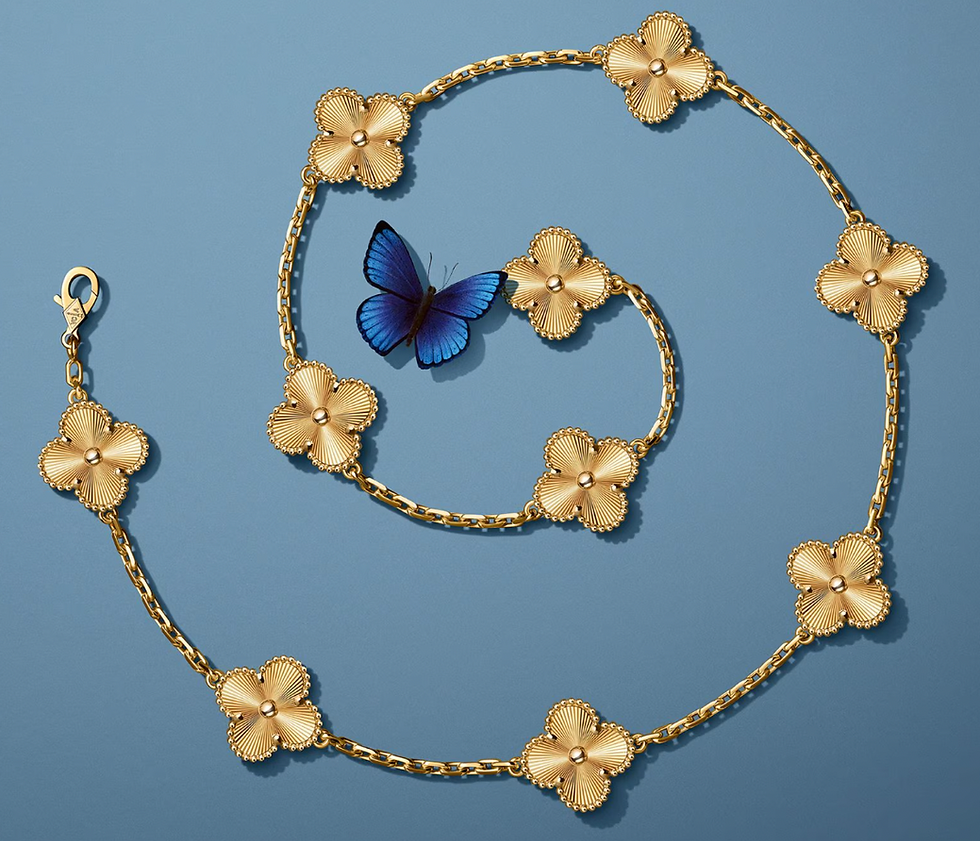The Jewelry of French Luxury Houses
- Evaluart

- Jul 31
- 3 min read
In the discreet and prestigious world of luxury houses, jewelry holds a unique place. It is not merely an accessory or a fashion product—it embodies tradition, artistic vision, and heritage. At houses like Dior, Chanel, Cartier, or Van Cleef & Arpels, fine jewelry is a language in its own right: a way to tell the story of the house, to elevate the intimate, and to anchor beauty in time.
Jewelry becomes a miniature artwork worn on the body like a living sculpture, at the intersection of art, design, fashion, and symbolism.

Jewelry as the Aesthetic Extension of the House
Each luxury house develops its own distinctive jewelry style—a recognizable signature.
At Dior, the artistic director of jewelry, Victoire de Castellane, has imagined bold, colorful, and technically sophisticated collections since 1999. Through lines such as Milly Carnivora, Le Bal des Roses, or Diorama, she draws from Christian Dior’s whimsical and floral universe—gardens, colors, childhood memories—to create pieces that resemble visual fairytales.
Chanel, on the other hand, roots its fine jewelry in the legacy of Gabrielle Chanel. It reinvents the house’s signature codes—the camellia, the comet, the lion, the bow—and transforms them into pieces of striking formal purity. Chanel’s style stands out for its geometric clarity, its balance between masculine and feminine elements, and a discreet yet confident elegance.
Both approaches reflect deep respect for the identity of their respective houses, yet they express it in radically different ways: one in technicolor fantasy, the other in refined monochrome.
Luxury jewelry is not just about precious materials—it fully belongs to the tradition of applied arts. Each piece is created with the same level of precision and intention as a work of art. The initial sketch is drawn like a fine illustration, stones are selected not only for rarity but also for symbolic meaning, and craftsmanship is entirely manual and deeply rooted in historical technique.
The high jewelry ateliers of Paris—particularly those around Place Vendôme—are home to rare artisanal trades: gem setters, lapidaries, enamelers, polishers, engravers… These professions demand patience, precision, and technical excellence.
These creations aim to go beyond mere decoration: they express artistic intent. Lines, volumes, light, and color are orchestrated with the same sensitivity seen in sculpture or classical goldsmithing. Jewelry thus becomes a microcosm of expression, where preciousness serves storytelling.

Jewelry as Silent Storytelling
Jewelry does not only dazzle—it tells a story. It can evoke love, memory, identity. It is often gifted to mark a key life event: a birth, a commitment, a legacy. Sometimes it is worn as a declaration of personal style or conviction. This is why luxury houses invest so much in curating the visual universe around their collections.
Dior Joaillerie, for instance, unveils its creations as full narratives: each collection has a poetic title, an imaginary world, recurring motifs. Chanel likewise draws parallels between its haute couture and its jewelry collections, reinforcing the aesthetic and symbolic continuity of the house.
Through these silent objects, one glimpses entire worlds—enchanted gardens, celestial constellations, childhood memories, or symbols from the founder’s life. Jewelry becomes a vessel for meaning and emotion, far beyond material value.
Memory, Legacy, and Emotional Durability
Unlike other luxury goods often tied to fast-changing trends, fine jewelry is designed to endure. It aligns with a logic of permanence. It is kept, passed on, and collected. It travels through generations, carrying with it fragments of memory: the origin of an engraved name, the date of a promise, the echo of a past style.
To offer or wear a house-made jewel is to align oneself with a symbolic lineage—family, culture, aesthetic. It can also be an act of investment in something rare, enduring, and meaningful.
At a time when the notion of emotional durability is becoming central in luxury discourse, fine jewelry takes on renewed resonance. It resists the ephemeral and favors the timeless, the essential, and the universal.
The jewels of houses like Dior and Chanel are not merely objects of desire. They are fragments of history, miniature cultures, and bridges between art and the intimate. They embody a distinctly French art of living, based on artisanal excellence and cohesive aesthetic vision.
At Evaluart, we believe these pieces deserve to be studied not only for their beauty, but also for what they reveal: a certain idea of luxury, of creation, of memory, and of human connection.

References
Boulay, A. (2020). Le luxe, une construction culturelle. Armand Colin.
Lipovetsky, G. & Serroy, J. (2013). L’esthétisation du monde: Vivre à l’âge du capitalisme artiste. Gallimard.
Müller, F. (2012). Fashioning the Object: Bless, Boudicca, Sandra Backlund. The Art Institute of Chicago.
Sorbets, B. (2014). Le bijou contemporain: Entre art et design. Editions Alternatives.
Prémont, M. (2021). Les codes du luxe. Presses Universitaires de Laval.



Comments